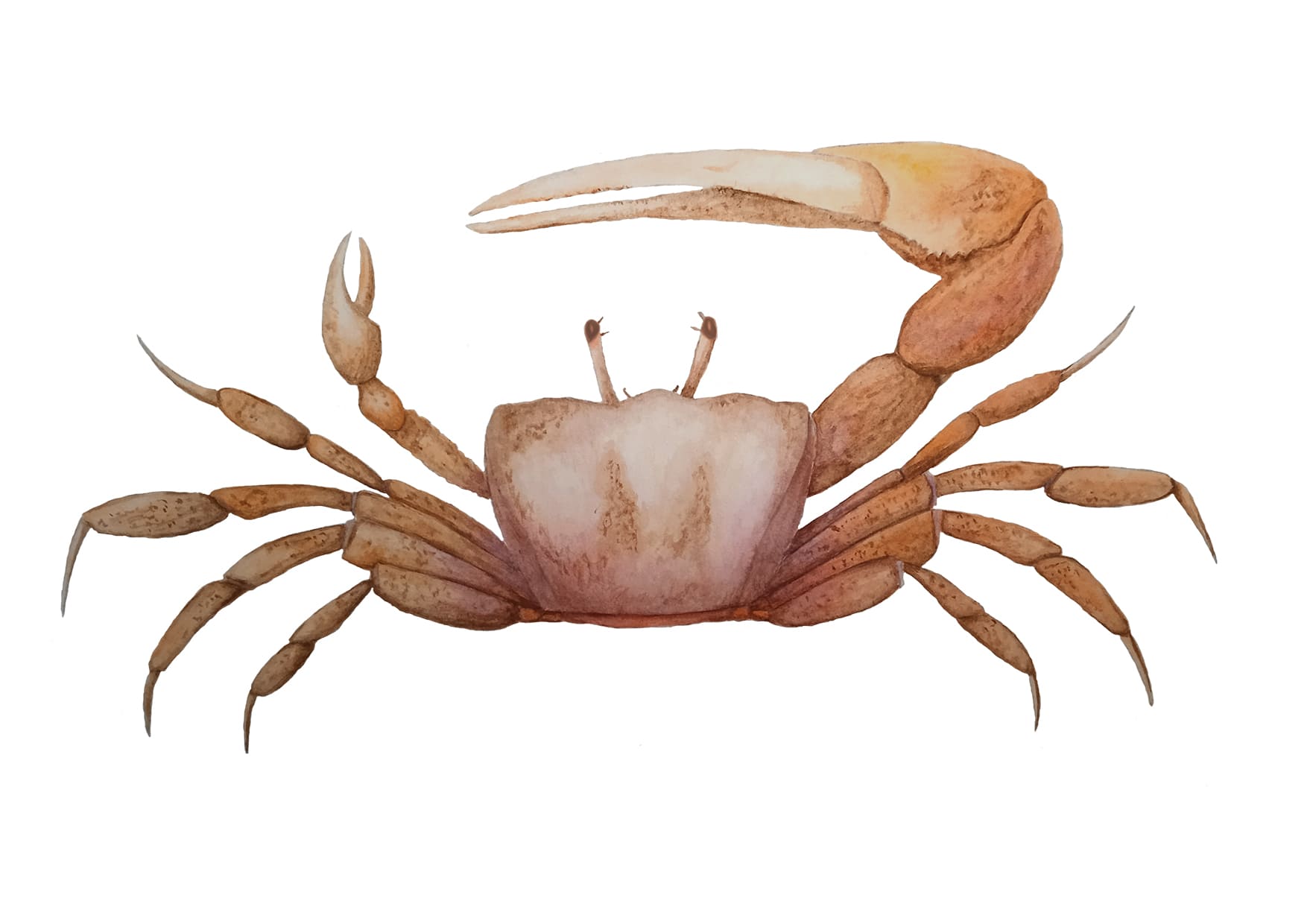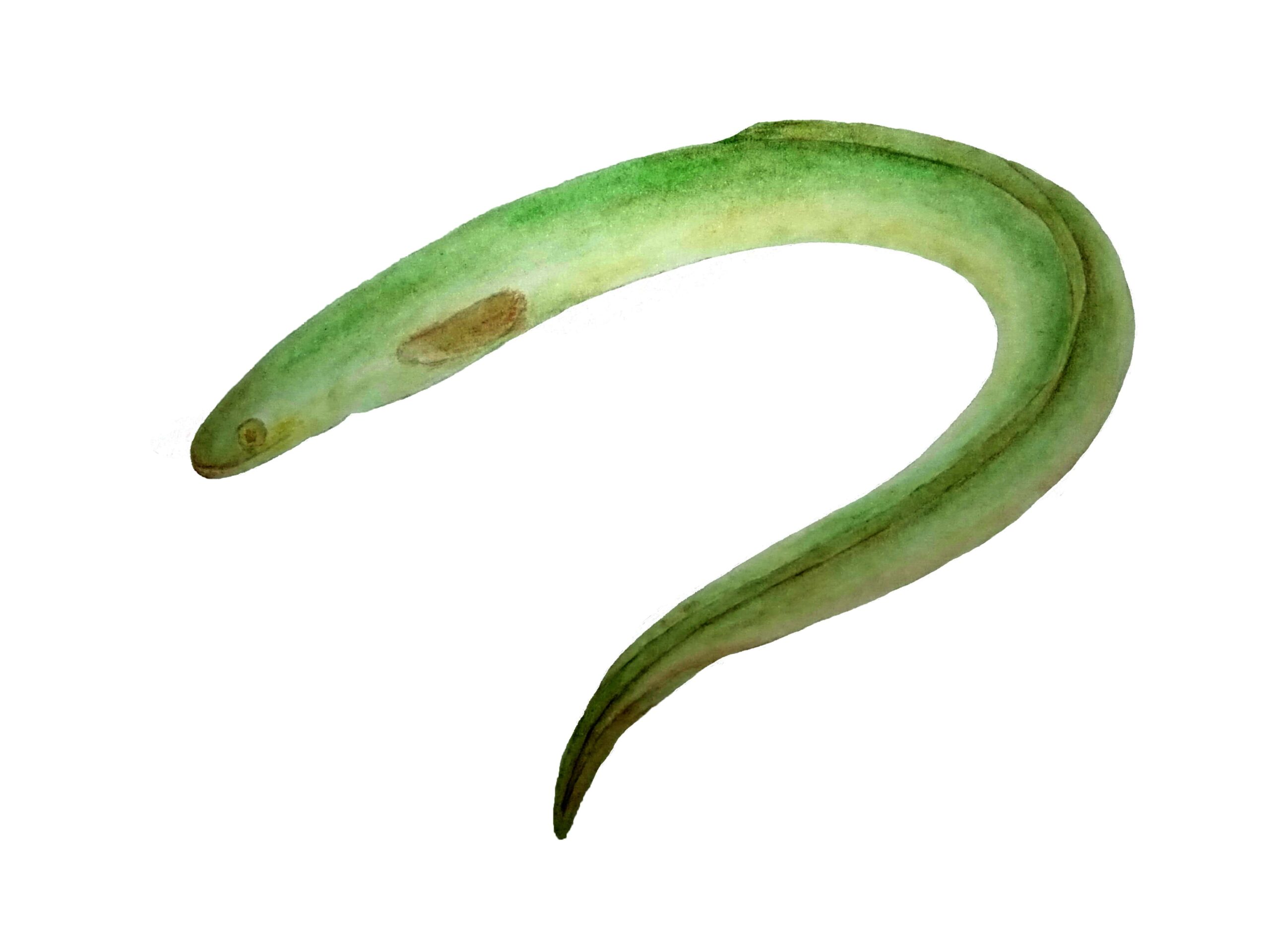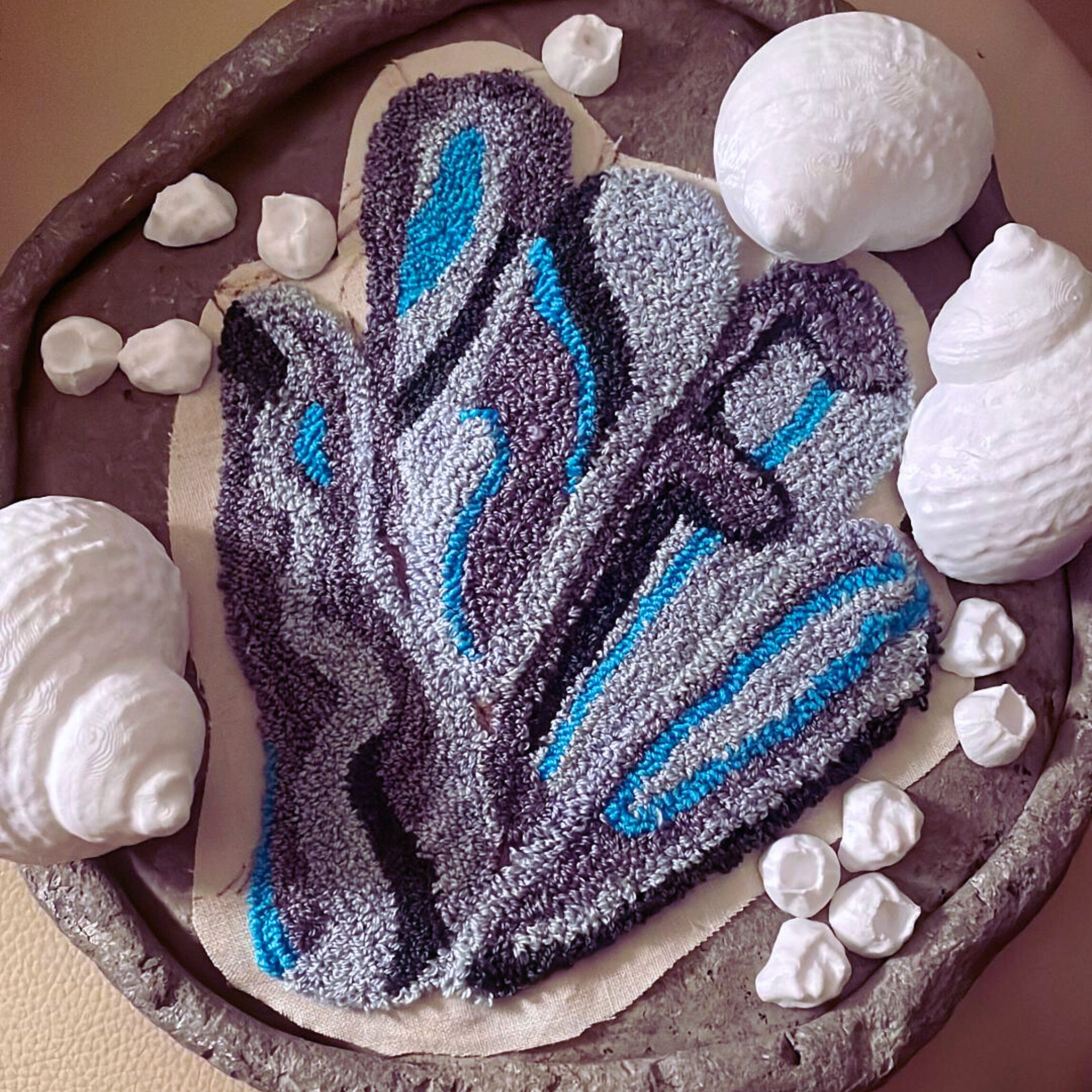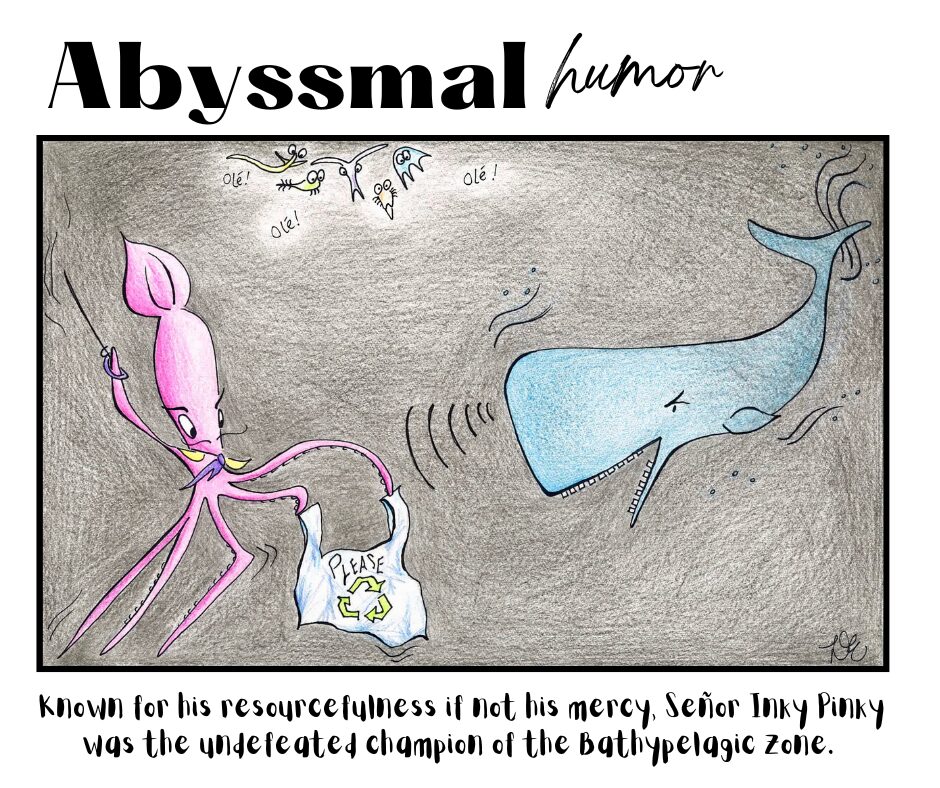Art gallery
Showcasing the artwork of our team and interns!

Showcasing the artwork of our team and interns!
Scientific illustrations

Afruca tangeri (Fiddler crab), © Soledad Álvarez

Anguilla anguilla (European eel), © Soledad Álvarez

Carcharhinus longimanus (Oceanic whitetip shark), © Mieke Weyn

Scorpaena maderensis (Madeira rockfish), © Mieke Weyn

Hippocampus hippocampus (Short-snouted seahorse), © Mieke Weyn

Trachinotus ovatus (Pompano), © Mieke Weyn

Thalassoma pavo (Ornate wrasse), © Mieke Weyn
Ecological art

The Whale Whisperer, 2024, © Victoria Evans
Victoria did an internship with our Marine Technology and AI team, creating the Whale Whisperer by the end! Read more on our blog.

Plasticrusts, a new type of plastic pollution, 2024, © Clara Benadon
Clara did an internship with us and created an entire exhibit of art representing MARE-Madeira research and ecological concerns in Madeira — including plasticrusts, Sargassum seaweed and invasive species! Check out this short reel.

Boomerang, 2024, © Catarina de Freitas, João Oliveira and Juan
Our Youth Ambassadors, Catarina and João, along with photographer Juan, submitted this entry to the ‘We, Children of the Ocean’ photography competition — and won! Their work was displayed at the 2024 UN Ocean Decade Conference. See link.

Marisa a Medusa, 2024 © Marisa Gouveia
Marisa created this jellyfish for the JellyWeb Madeira Cruise, which traveled with our researchers onboard the vessel for three weeks, ‘overseeing’ research activities that were shared on social media. We call this jellyfish ‘Marisa’ in honor of her maker!
Abyssmal Humor

Happy Christmas Lanternfish, December 2022, © Diane Esson
The Marina Trench is the deepest oceanic trench in the world, with its deepest point (the Challenger Deep) deeper than Mount Everest is high.

Don’t Play In Your Dinner, January 2023, © Diane Esson
Organic material that falls from upper layers of the ocean into the deep sea is known as marine snow, and is a source of food for deep-sea creatures.

Late Again!, January 2023, © Diane Esson
Jacques Piccard, a Swiss Oceanographer, along with Don Walsh, were the first people to explore the Challenger Deep — the deepest known part of the ocean (found in the Mariana Trench). Learn more on our blog.

Señor Inky Pinky, March 2023, © Diane Esson
Deep-diving cetaceans like sperm whales use echolocation to hunt for food in the dark. Our research suggests that these animals may confuse plastic litter for food, given similarities in the acoustic signatures of plastic and their prey (like squid).

Artificial Fish, May 2023, © Diane Esson
In the 1970s, millions of used tires were dumped into the ocean in Florida in a misinformed conservation effort. The ‘Osborne Reef‘ did not create new habitat for species and instead only created greater environmental damage. This is only one example of an artificial reef implemented in the name of conservation without proper scientific trials. Learn more on our blog.

“With a Voice as Big as the Sea”, Dec 2024, © Diane Esson

Wasabi nose, February 2025, © Diane Esson
Sharks get a bad rep as scary monsters of the ocean. But most of the time, they’re just minding their own business. At MARE-Madeira, we think sharks are cool (they aren’t bullies like some mammals are!). Read our interview with former PhD student Ashlie McIvor to discover why she loves studying sharks!

Unsquishable, October 2025, © Diane Esson
Much of the ocean’s available organic material is digested and reduced to detritus before it reaches the seafloor, sprinkling down as ‘marine snow‘. But some things — like whales, man-made waste and ships — sink near fully-formed. Whale falls are quickly consumed, but our pollution isn’t: the deep-sea is littered with our plastic and metal that can take hundreds to thousands of years to decompose. (Xhu et al., 2024, Chamas et al., 2020)